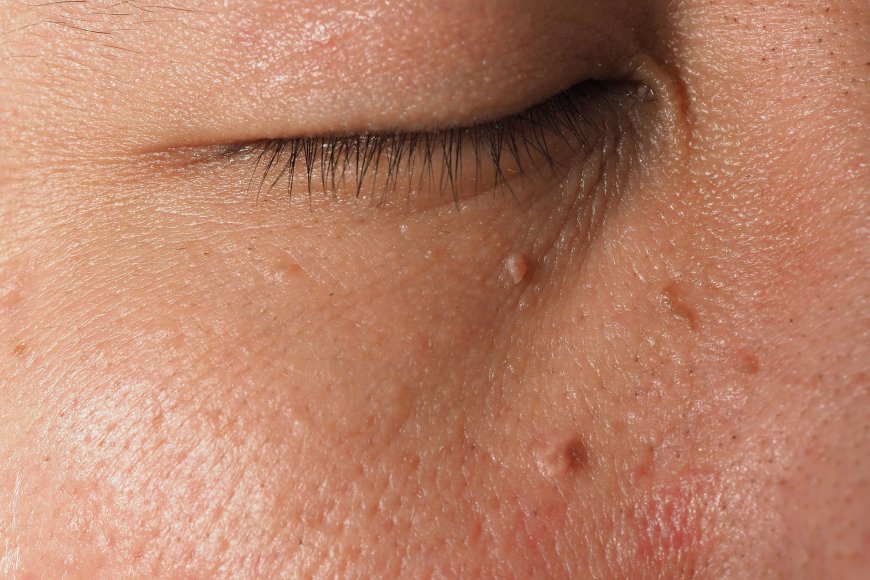Explore the Best Milia Treatments for Your Skin
Milia can occur at any age but are more common in newborns, who often develop milia on their cheeks, nose, and forehead. In adults, milia can appear due to various factors, including sun damage, skin trauma, or prolonged use of heavy skincare products. These tiny cysts can vary in size and are usually painless. Understanding the nature of milia is essential for determining the most effective treatments.

Milia are small, white cysts that typically appear on the face, especially around the eyes and cheeks. They are often mistaken for whiteheads, but unlike acne, milia are not caused by clogged pores. Instead, they form when keratin, a protein found in the skin, becomes trapped beneath the surface. While Milia Treatments in Dubai are harmless and usually don’t require treatment, many people seek ways to remove them for cosmetic reasons. In this article, we will explore the best milia treatments for your skin, helping you achieve a clearer complexion.
Understanding Milia: Causes and Characteristics
Milia can occur at any age but are more common in newborns, who often develop milia on their cheeks, nose, and forehead. In adults, milia can appear due to various factors, including sun damage, skin trauma, or prolonged use of heavy skincare products. These tiny cysts can vary in size and are usually painless. Understanding the nature of milia is essential for determining the most effective treatments.
Best Milia Treatments
1. Exfoliation
Exfoliation is a crucial step in any skincare routine, particularly for those dealing with milia. Gentle exfoliation helps remove dead skin cells and can prevent the buildup of keratin that leads to milia formation. You can use physical exfoliants, like scrubs, or chemical exfoliants, such as alpha-hydroxy acids (AHAs) or beta-hydroxy acids (BHAs). Look for products that are non-comedogenic to avoid clogging pores further.
2. Topical Retinoids
Topical retinoids, derived from vitamin A, are another effective treatment for milia. These products promote cell turnover, helping to prevent keratin buildup and reducing the appearance of milia over time. Prescription-strength retinoids, such as tretinoin, can be particularly effective but may cause irritation. For those with sensitive skin, over-the-counter options containing retinol can also be beneficial.
3. Chemical Peels
Chemical peels involve applying a solution to the skin that exfoliates the top layers, helping to remove dead skin cells and promote new cell growth. Peels containing glycolic acid or salicylic acid are especially effective for treating milia. These treatments can be performed at a dermatologist's office or with at-home products designed for milia removal.
4. Microdermabrasion
Microdermabrasion is a non-invasive procedure that uses fine crystals to gently exfoliate the skin's surface. This treatment helps remove dead skin cells and can improve the overall texture of the skin. While microdermabrasion can be effective for milia, multiple sessions may be necessary to see significant results.
5. Cryotherapy
Cryotherapy is a treatment that involves freezing the milia using liquid nitrogen. This method effectively destroys the cysts without damaging the surrounding skin. Cryotherapy is usually performed by a dermatologist and may require several sessions for optimal results. While effective, it may cause temporary redness or swelling in the treated area.
6. Needling
Needling, or dermarolling, is a technique that involves using a device with tiny needles to create micro-injuries in the skin. This process stimulates collagen production and can help improve the skin’s texture. In some cases, a dermatologist may perform a more precise version of this treatment to extract milia directly, allowing for effective removal.
Natural Remedies for Milia
While professional treatments are effective, some individuals may prefer natural remedies for milia. Here are a few options that may help reduce their appearance:
1. Honey and Sugar Scrub
A homemade scrub made from honey and sugar can provide gentle exfoliation. Honey has antibacterial properties, while sugar helps remove dead skin cells. Mix equal parts of honey and sugar, apply to the affected areas, and gently massage for a few minutes before rinsing off.
2. Jojoba Oil
Jojoba oil is known for its moisturizing properties and is non-comedogenic, making it suitable for all skin types. Applying a few drops of jojoba oil to the skin can help keep it hydrated without clogging pores, which may reduce the likelihood of milia formation.
3. Aloe Vera
Aloe vera is well-known for its soothing and healing properties. Applying fresh aloe vera gel to the skin may help reduce inflammation and promote healing, making it a great option for those with milia.
Prevention Tips
While treatments can help remove milia, prevention is key to avoiding their recurrence. Here are some tips to keep your skin clear:
-
Use Non-Comedogenic Products: Opt for skincare and makeup products labeled as non-comedogenic to prevent clogging pores.
-
Maintain a Consistent Skincare Routine: Regular cleansing, exfoliating, and moisturizing can help keep the skin healthy and reduce the risk of milia formation.
-
Protect Your Skin from the Sun: UV exposure can contribute to skin damage and milia formation. Always use sunscreen with at least SPF 30 to protect your skin from harmful rays.
When to Seek Professional Help
If milia persist despite at-home treatments or if you are unsure about the best approach, it may be beneficial to consult a dermatologist. They can provide personalized recommendations and treatments tailored to your skin type and condition.
Conclusion
Milia can be a frustrating skin concern, but various effective treatments are available to help you achieve a clearer complexion. From exfoliation and topical retinoids to professional procedures like cryotherapy and microdermabrasion, there are options for everyone. By understanding the causes of milia and implementing preventive measures, you can maintain healthy skin and minimize the chances of their recurrence. Explore these treatments and discover what works best for your unique skin needs.

 laiba5656
laiba5656